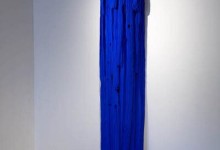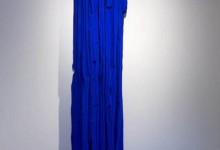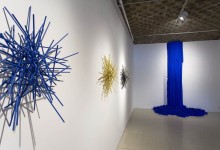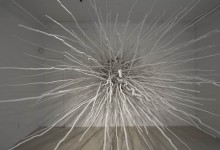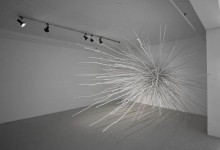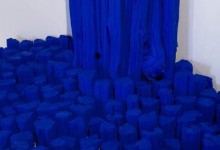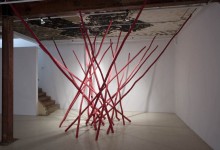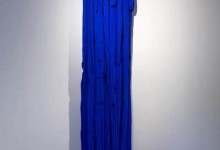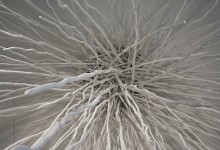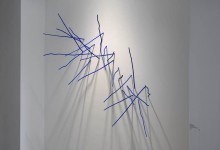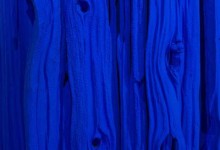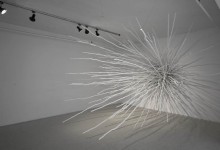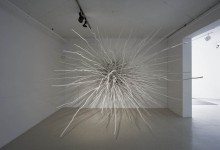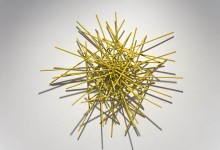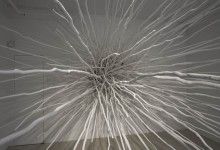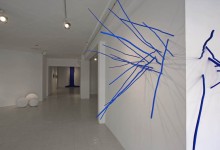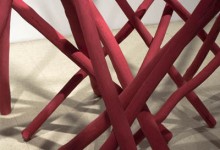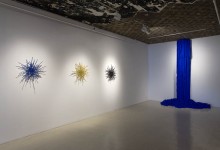“We reference everything from the body.” -Shayne Dark.
If this is true, then works by Dark in this show must have a striking effect on many. Echoing the vibrancy of Pop Art and the scale of Minimalist sculpture, the work of Shayne Dark in Here and Gone, is punchy, crisp, and is full of compromises.
Looking around the gallery, it is easy to see patterns in the forms, materials, and treatment of the work. For example, On Fire and Blizzard share similarities in all three of these areas. It is in the hue and presentation, that the artist creates radically different effects. Playing with fixed and dependent variables helps Dark to open the viewer up to one of his main interests, the plurality of perception. Emphasizing the details of the surface, how the interrelation of individual parts, and the overall feeling of the work, is therefore key. In traditional, Canadian art history, the use of trees has been strongly linked with the representation of individuals (Think: Thompson’s Jack Pine ). Dark’s choice to tint the unrefined wood in his works with intense primary colours, black and white, is a physical appeal that invites and includes the perceptions and interpretations of all the viewers to the gallery. The use of primary colours and shades relates to their status as the basis for producing all shades- their primacy. It is through the primitive, basic, senses that Dark’s work initially connects with the viewer.
Very much interested by hue and scale, Dark draws on these formal qualities for their particular ability to elicit an emotional response from the viewer. Seeking to create a direct connection with the viewer then allows for the further layering of multiple readings of the work, a part of each individual experience. The overall exhibit incorporates both tension and balance, in the combinations of material and in the structure. In the structures, Dark has used natural and imposed forces- often in competition with one another. Whereas in the materials, there is a combination of natural and manufactured materials, most notably the various wood vs. refined metals.
There is a duality at play, that between the natural and the urban. It seems that in this age of post-Industrial Revolution, where we are plagued with the problems that surround finding a balance between these two worlds, Dark has found some common ground in the organic aspects of each, uniting the two in his oeuvre.



